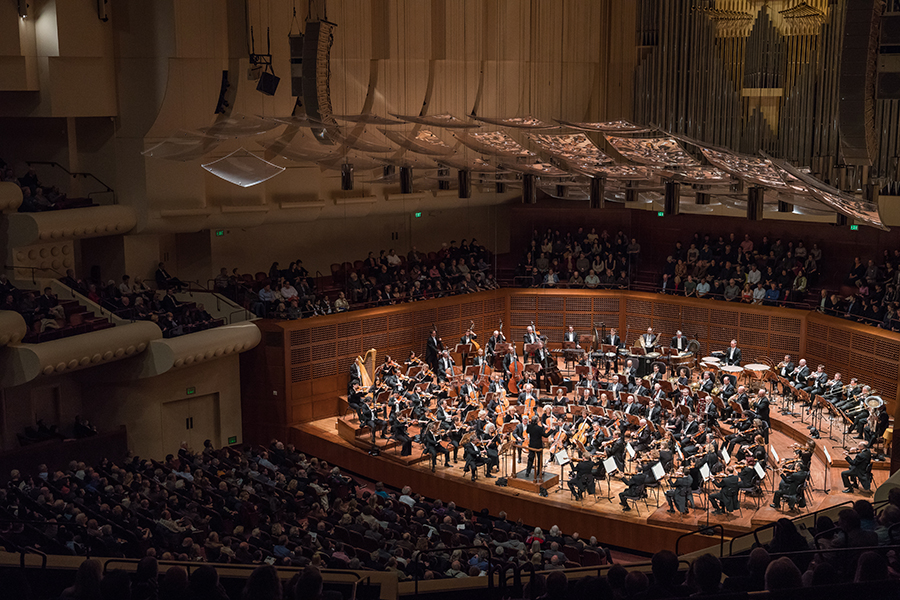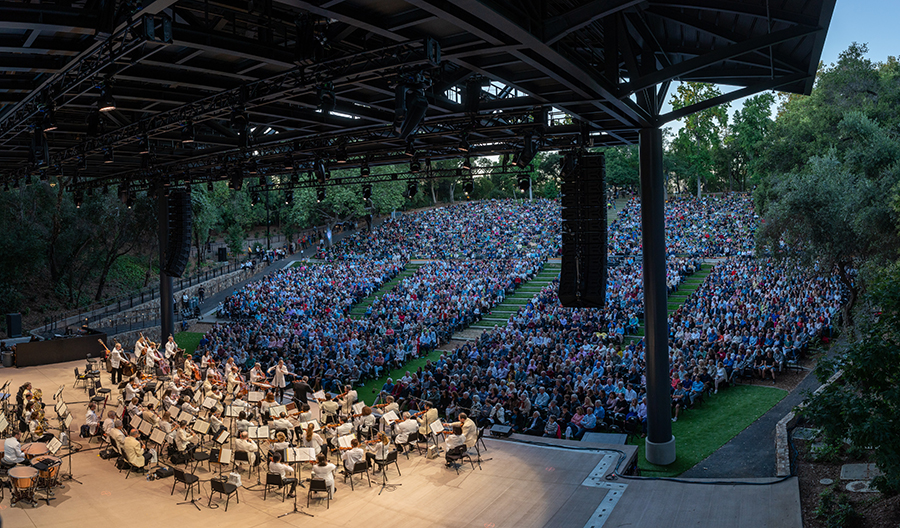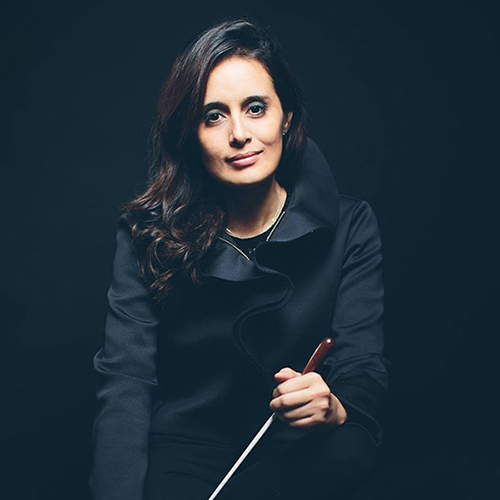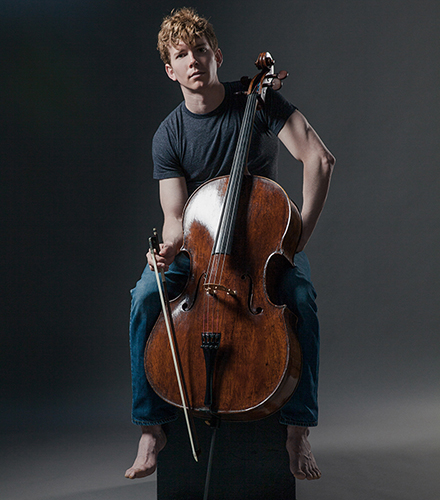In her first appearance with the San Francisco Symphony, Colombian conductor Lina González-Granados leads the Symphony in two concerts this week – at Davies Symphony Hall on July 30th, and at the Frost Amphitheater, Stanford University, the following evening. The program of music includes the Suite No 1 from de Falla’s The Three-Cornered Hat, Schumann’s Cello Concerto, with American cellist Joshua Roman as soloist, and Kodály’s Dances of Galánta,
Praised by OperaWire for her “attention to orchestral colours”, Lina González-Granados is known for her interpretations of both opera and orchestral music dating from the 17th century to the present. She has also caught the eye of the Boston Musical Intelligencer with her “lightning changes in tempo, meter, and effect”. Currently the Conducting Fellow of the Philadelphia Orchestra and Seattle Symphony – with whom she has recently appeared – she has also performed with the San Diego Symphony, San Francisco Conservatory Orchestra, Tulsa Opera, Orquesta Sinfónica Nacional de Colombia and Filarmónica de Medellín.
Forthcoming debuts include those with the Los Angeles Philharmonic, Louisiana Philharmonic, San Antonio Symphony, Rhode Island Philharmonic and Hawaii Symphony in the US, and further afield, the Oxford Philharmonic, OSPA (Porto Alegre Symphonic Orchestra), Norway’s Kristiansand Symphony and the Lausanne Chamber Orchestra. Ms González-Granados is also Artistic Director of the Unitas Ensemble, a chamber orchestra she founded to promote and perform the works of Latin-American composers.
Composer, curator and cellist of international standing, Joshua Roman is known for his vision, artistic leadership and versatility, with a repertoire of styles which ranges from Bach to Radiohead. He was principal cellist at the Seattle Symphony before embarking on a solo career, and in 2015 was named a TED Senior Fellow. Following his 2017 recording of Aaron Jay Kernis’s Cello Concerto – which was written for him – Roman was highly praised in a Gramophone review: his “extraordinary performance combines the expressive control of Casals with the creative individuality and virtuoso flair of Hendrix himself”.
Recent career highlights include appearances with the Colorado, Detroit, Jacksonville, Milwaukee, San Francisco and Princeton symphonies, and chamber performances include collaborations with the Los Angeles Chamber Orchestra, and the JACK, St Lawrence and Verona quartets. Musicians for whom Roman has written include the JACK Quartet, violinist Vadim Gluzman, and conductor David Danzmayr, and he has been commissioned by ProtoStar to compose a Musical Journal of shared experiences during the Coronavirus pandemic.
In 1917, Manuel de Falla – regarded as the most distinguished Spanish composer of the early 20th century – completed a work, El corregidor y la molinera, based on an 1874 Andalusian story by Pedro Antonio de Alarcón y Ariza. Impresario Serge Diaghilev persuaded de Falla to rescore this work for a ballet to be choreographed by Léonide Massine, which would be called El sombrero de tres picos (The Three-Cornered Hat). The premiere, by the Ballets Russes, took place in London in 1919, with Massine as one of the principal dancers, costumes and designs by Pablo Picasso, and Ernest Ansermet conducting. This San Francisco Symphony concert features the Suite No 1 from the ballet.

Robert Schumann wrote his Cello Concerto in A minor Op 129 in the space of two weeks, during his tenure as Municipal Music Director in Düsseldorf in October 1850. It was a time of great stress, anxiety and mental breakdown for the composer, and over the following two years the work was revised, with final completion in February 1854 – a couple of days before Schumann threw himself into the Rhine in an attempted suicide. Schumann conceived the piece as a “Concert piece for cello with orchestral accompaniment”, with the three sections being played one after another without interruption, hence the departure from the usual concerto format.
The work was published in 1854, but with Schumann confined to a sanatorium, the work wasn’t premiered until 1860 – four years after the composer’s death – when it was performed by Julius Rietz and the Gewandhuis Orchestra, with Ludwig Ebert as soloist. The concerto was not particularly well received, and was rarely performed until the early years of the 20th century, thanks to the efforts of Pablo Casals.

The concert ends with Zoltán Kodály’s Dances of Galánta, written in 1933, and described by the composer as a piece that represented the folk songs and heritage of Hungary, from which he often drew inspiration for his compositions. Kodály spent part of his childhood in the small town of Galánta which had a famous Roma band, and it was the Roma themes from those songs of his childhood that he incorporated into these five pieces, which are both nostalgic and spirited.
Lina González-Granados leads the San Francisco Symphony, with soloist Joshua Roman, in music by de Falla, Schumann and Kodály, at Davies Symphony Hall on Friday, July 30th, and at the Frost Amphitheater, Stanford University, on Saturday, July 31st. For more information, and for tickets, visit the San Francisco Symphony website.
Information sourced from:


